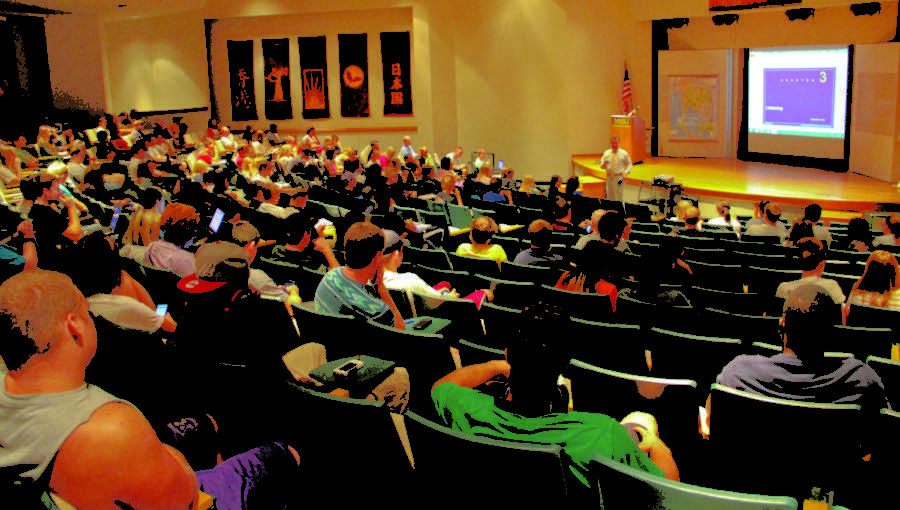Slavings: Course redesign creating new opportunity
Comm. Department Head Kelly Larson stands in front of a packed Corley Auditorium in Webster Hall teaching one of his Comm. 100 courses. The class was redesigned last semester to include much larger class sizes.
Missouri Southern and 12 other universities in the state received a $250,000 education grant to be used to redesign courses using technology to improve student learning and promote unprecedented collaboration among Missouri’s universities.
In a nationwide, competitive grant process, the Missouri application was one of only 29 selected from a pool of 600.
“Course redesign, a priority of Gov. Nixon, will result in improved remediation rates, better learning outcomes for students and higher completion rates for the state,” said Missouri Commissioner of Higher Education, David Russell, in a release issued by Missouri Gov. Jay Nixon.
Southern has developed collaborative programs and efforts to leverage learning and technological advances in its classrooms.
Each university participating in the grant has redesigned one course that is common to all institutions and is guided by the principles and practices of the National Center for Academic Transformation, a well-known national leader in course redesign. The course that was chosen is Oral Communication.
At Southern, most undergraduate degree programs require the course.
Professor Shanna Slavings, Assistant Professor of Communications teaches one of the redesigned course this year.
“It’s a really good thing that is happening,” she said. “It’s creating new opportunities and we’re using more prevalent teaching technique.”
Students enrolled in the course attend lecture one day a week and also participate in a lab.
In addition to benefiting students with redesigned courses, the public four-year universities also eventually will share their redesigned course materials with the 21 public two-year colleges in Missouri, which currently enroll more than 100,000 students.
Your donation will support the student journalists of Missouri Southern State University. Your contribution will allow us to purchase equipment and cover our annual website hosting costs.




























